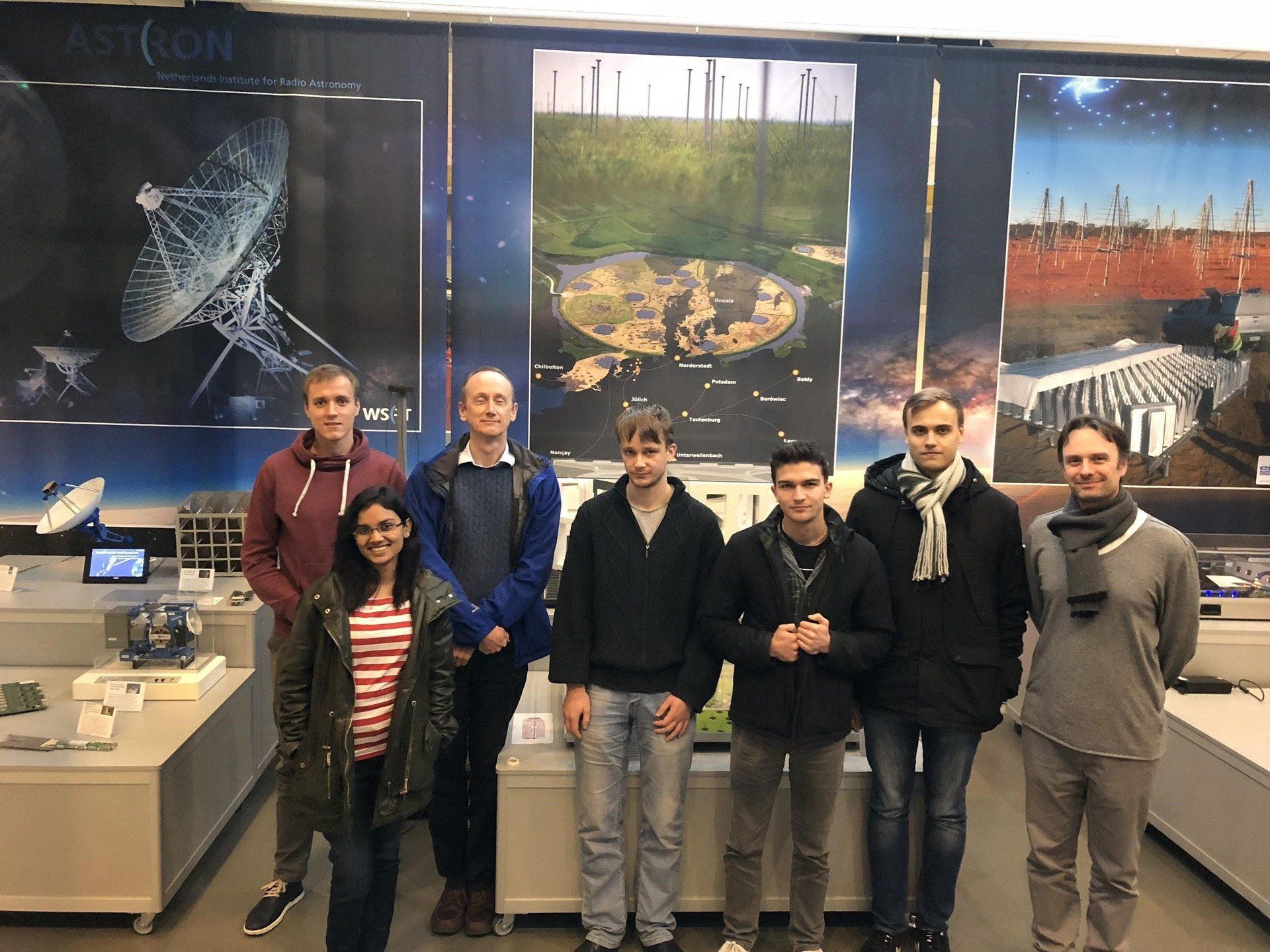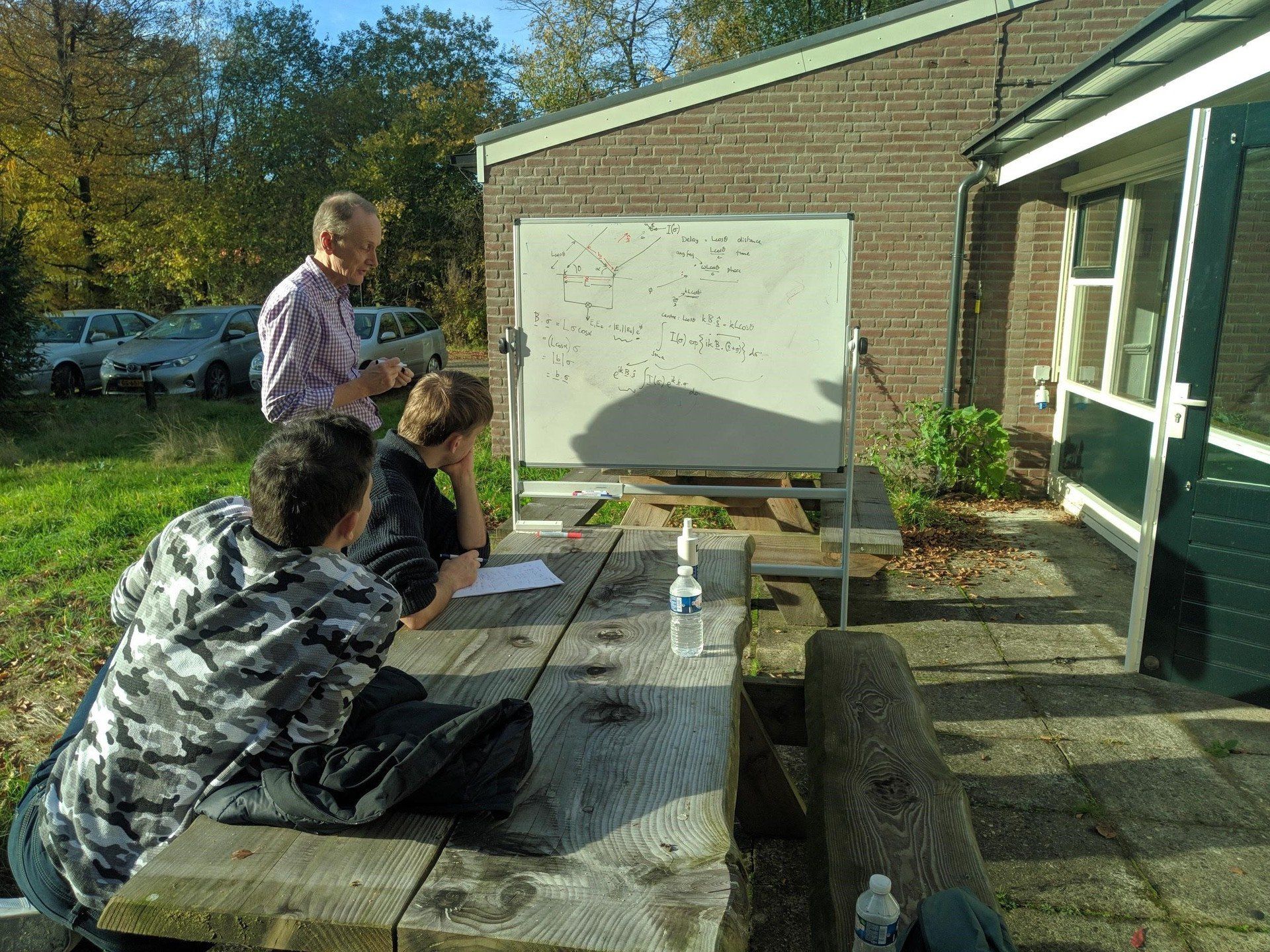This web page is created within BALTICS project funded from the European Union’s Horizon2020 Research and Innovation Programme under grant agreement No.692257.
During the radio astronomy project, VIRAC staff attends training seminars in the Netherlands
nov. 20, 2018
During the period from November 4th to November 17th in the framework of project “Building on Advanced Lofar Technology for Innovation, Collaboration, and Sustainability” (project nr. 692257 – BALTICS), employees of Ventspils International Radio Astronomy Centre (VIRAC) attended 2 week training seminars in ASTRON, the Netherlands Institute for Radio Astronomy. During this period of time researchers from ASTRON and researcher from Radio Astronomy Institute of the University of Manchester “Jodrell Bank Center for Astrophysics” (JBCA) provided theoretical background in radio astronomy and LOFAR data processing techniques as well as together with VIRAC employees had a hands-on experience to LOFAR data reduction and imaging. Additional work was done to process and analyze data from the LOFAR Long-Baseline Calibrator Survey (LBCS) where the results will be released in a scientific publication.
It is worth mentioning that radio telescopes RT-32 and RT-16 in Irbene are in the service of the Ventspils International Radio Astronomy Center. In addition, in 2019, a new generation Low-Frequency Antenna Array (LOFAR), which will be a part of the international LOFAR antenna array or the large LOFAR telescope, also plans to launch its operation in Irbene’s radio telescope area.
Since VIRAC has only recently become involved in this kind of projects, and LOFAR is a new generation radio telescope, the knowledge acquired in the training is a qualitative development of the VIRAC competences and contributes to the growth of Latvian science in a relatively new field of radio astronomy – parabolic antenna and LOFAR interferometric data processing.
As a result of the training, VIRAC employees strengthened the existing and acquired new knowledge and skills in radio astronomy:
- theoretical basics in radio astronomy;
- basic principles of interferometry;
- LOFAR data processing techniques;
- LOFAR processing software and “pipelines”;
- creation of LOFAR sky maps;
- LBCS analysis and radio astronomical data simulation.
E-pasts: virac@venta.lv
Tālrunis: +37163629656
Ekskursijas: +37129230818
Inženieru iela 101, Ventspils, LV-3601
Paldies par ziņu.
Mēs ar jums sazināsimies cik drīz vien iespējams.
Atvainojiet, ir notikusi kļūda.
Diemžēl ziņu nosūtīt neizdevās.
Lūdzu mēģiniet vēlreiz, vai sūtiet ziņu uz virac@venta.lv





















